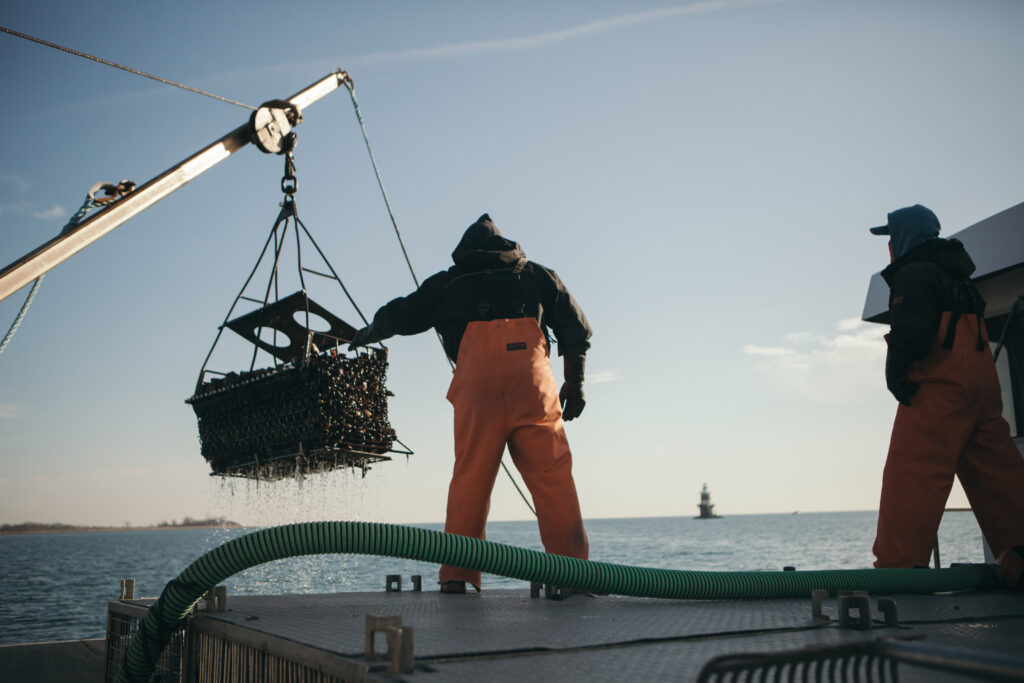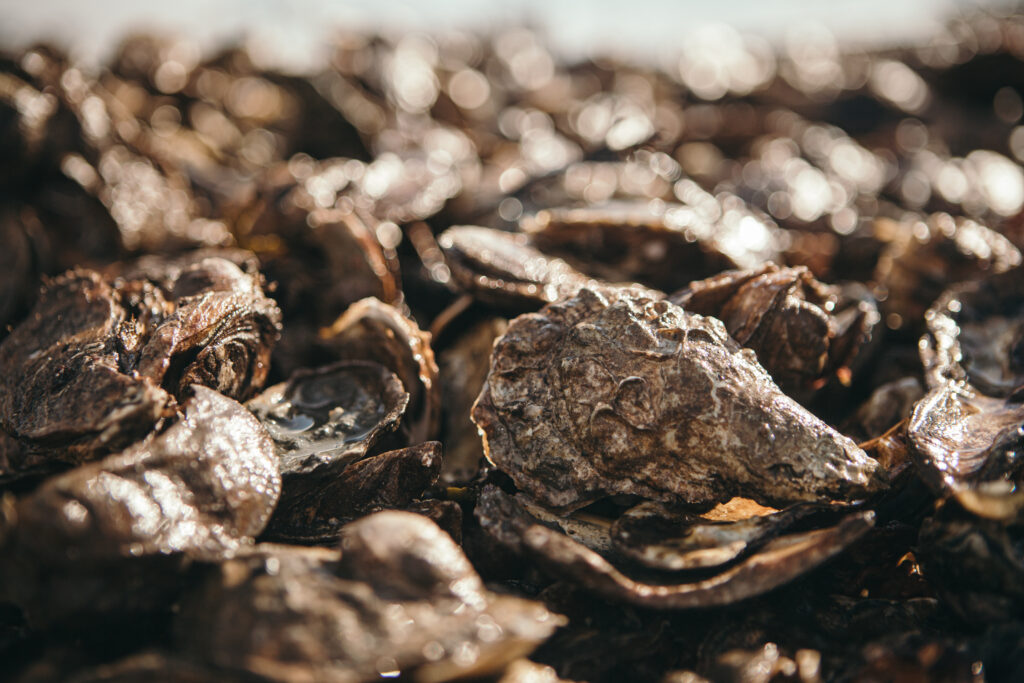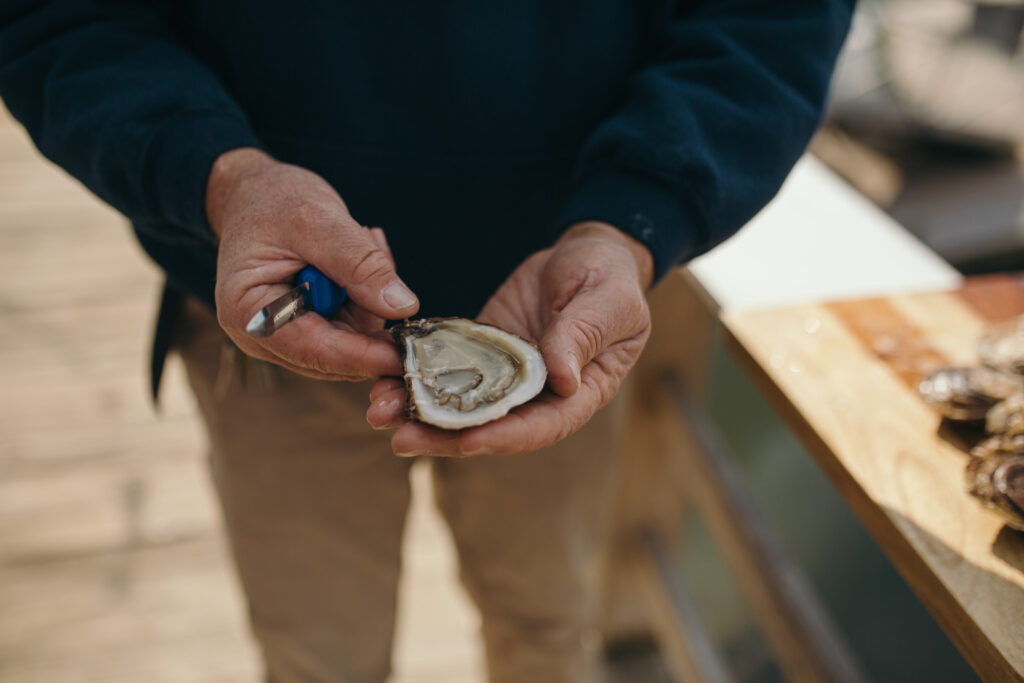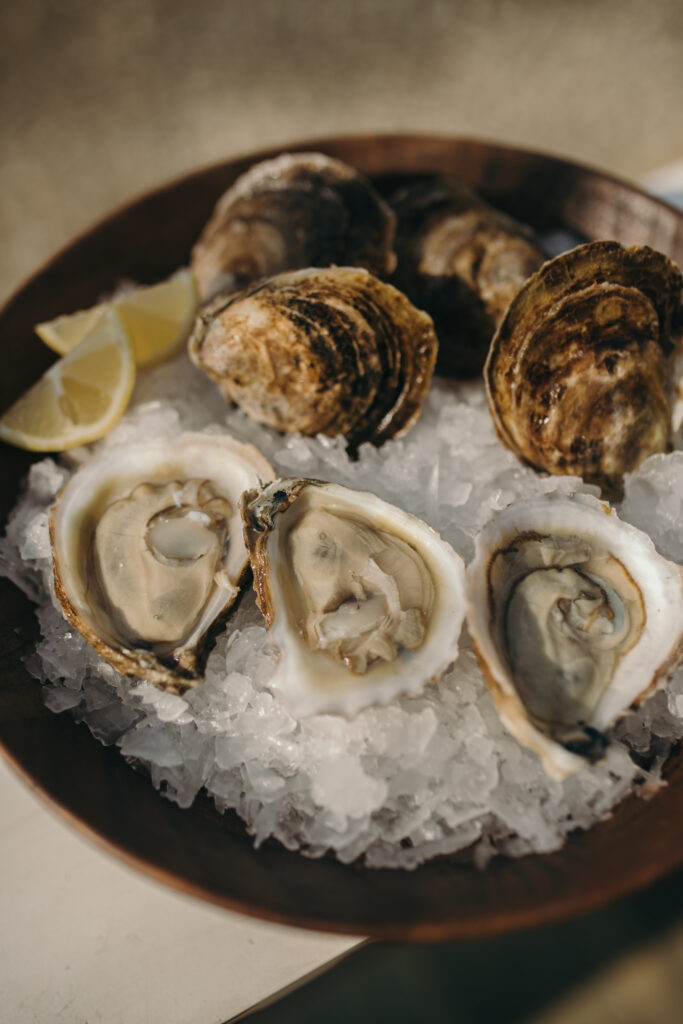
More than 31 million oysters were harvested commercially from 60,000 acres of shellfish beds along the Connecticut coast in 2019. For those keeping count, that’s about 9 oysters for every single resident in our agriculture and aquaculture-rich state.
“Connecticut is fortunate to have such robust aquaculture resources that have been protected through the wise actions of our prior generations,” shares David Carey, director of the Connecticut Bureau of Aquaculture. “I’m pleased to see so many of our residents and visitors enjoying our locally-sourced seafood products and we look forward to continued growth of Connecticut’s aquaculture as we explore new opportunities.”
While October is commonly associated with the apples, pumpkins and other seasonal products of the harvest season, it’s also a time when we recognize the other producers that supply our favorite fish markets, clam shacks, and shore dinners. National Seafood Month recognizes the abundance, quality, and effort that goes into the daily aquaculture harvest and the race to keep it fresh.
Shellfish
Shellfish plays a significant role in Connecticut’s aquaculture sector. All along our coastline, you can find an abundance of oysters, clams, mussels, bay scallops, and edible snails such as whelks and conch.
Here’s a look at the impact shellfish have had on Connecticut’s economy:
- Connecticut’s shellfish industry has 50 farms and 28 wholesale distributors
- The shellfish industry supports more than 300 jobs in the state
- Shellfish sales to consumers generate about $30 million each year
- Nearly 10,000 people apply for recreational shellfishing permits each year, supporting Connecticut towns with about $100,000 in revenue
With a vibrant industry so close at hand, consumers can easily find fresh CT Grown shellfish at local fish markets and farmers’ markets. At eateries ranging from humble clam shacks to upscale seafood restaurants, you can experience how Connecticut chefs are turning the local catch into delicious meals.
You can find out more about local oyster options here. Or, if you need some help shucking an oyster or clam, check out this tutorial.



Shellfish are not only a delicious source of food, but also offer several benefits to marine environments. By consuming and storing excess nutrients, they help to improve water quality and prevent algal blooms. Shellfish like oysters act as foundational species, forming reefs that provide habitats for other creatures.
Connecticut has a proud history of sustainable practices in shellfish, dating back to a 1750 law allowing towns to regulate their own harvests to prevent overfishing. The recently released Connecticut Shellfish Restoration Guide looks to ensure the future of the industry by increasing shellfish and fisheries production, strengthening coastal habitats, improving water quality, and stabilizing shorelines.
The Connecticut lobster roll
Look, we know Maine is supposed to be the New England champion when it comes to lobster. But ask the locals in Connecticut, and they’ll tell you we do a better lobster roll.
For one thing, we invented it. The story goes that sometime in the 1920s, a regular customer at Perry’s restaurant in Milford asked owner Harry Perry if he could prepare his lobster off the shell and on a roll. Harry was up to the challenge, and the rest is history.
The lobster roll that originated at Perry’s is still a favorite in our state. Instead of the lobster salad mixed with mayonnaise and served cold, the Connecticut lobster roll is served warm, drizzled with butter, in a toasted hot dog bun.
While lobster rolls are traditionally summer fare, many Connecticut lobster shacks are still open through the fall. Find one near you, and give this delicious sandwich a try.
Seaweed
A more recent addition to the CT Grown menu is seaweed and kelp, raised locally to be sold to restaurants and directly to the consumer. A small number of producers have started working fifteen permitted seaweed sites for the cultivation of sugar kelp and Gracilaria.
Not sure how you can incorporate seaweed into your cooking? Check out this seaweed cookbook for a wealth of ideas.
Like shellfish, seaweed and kelp help clean the water by absorbing carbon, phosphorus, and nitrogen as they grow. In addition, some of the seaweed grown in Connecticut waters ends up being used as a fertilizer — an innovative way aquaculture is supporting onshore agriculture.
With more than 300 miles of shoreline, people in every Connecticut community can access fresh, locally sourced seafood. Look for CT Grown aquaculture products at your local market and your favorite restaurants.